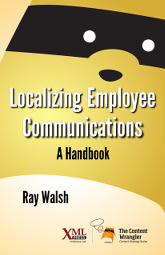Over the last week, I’ve been reviewing drafts of Anne Gentle’s new book, Conversation and Community: The Social Web for Documentation. I think it is going to be an important book that will help connect the dots between Web 2.0, aka the “Social Web,” and documentation.
Reading her book brought me to a revelation that, while surely not original, strikes me as critical to an understanding of Web 2.0 and how to use it. That revelation is that Web 2.0, while groundbreaking in terms of technology, is a throwback in terms of communication.
If you go back far enough (real time, not Internet time), technical information could only be communicated in person, one-to-one or one-to-a-few. The person communicating that information interacted directly with each learner, knew his or her strengths and weaknesses, and could customize the experience for that audience. This still remains the most effective way of teaching complex topics, but it is hard to scale to a large audience.
With the advent of writing, you got the advantage of much wider distribution, more faithful reproduction of ideas, and the potential for information to be preserved for hundreds, if not thousands, of years. But, you also got the disadvantage that written communication is at arms length. Unless you are fortunate enough to meet the author, or send him or her a letter, there is no possibility of interaction or customization of information.
There was little change with the first forms of electronic communication, including the Internet; you got email and the telephone, which are certainly significant, but the style of communication didn’t change much. The bulk of the content is still written as though it were a book, and even when it is written to fit the medium, it still has an arms length, one-to-many style.
With Web 2.0, social media, the social web, etc., we finally have the tools to make technical communication more like that initial one-to-one experience. Not only can we interact in real-time, or near real-time, using IRC, chatrooms, twitter, etc., we can use characteristics of our reader/viewer to customize content. Sounds a lot like what a good teacher does in a one-to-one or one-to-a-few situation; interaction and customization in the context of a conversation about the topic.
The “Aha” moment to me was understanding that while Web 2.0 gives us new ways to interact, they are only new ways to interact “with the aid of a computer.” In the end, I expect that nearly everything we do with Web 2.0 will build on centuries of experience communicating information among individuals. And, much of what we do as technical communicators will build on what we know from centuries of experience teaching people.
One of the many things I like about Anne’s book is that it builds a bridge between what we already know about communicating technical information and the capabilities of the social web. I think that if we ground our use of Web 2.0 in what we already know about communication and documentation, we will succeed at harnessing those tools productively. If, instead, we become enamored with the technology and forget that we’re trying to communicate, we will fail.





Richard,
Reading this article and your TECHWR-L post got me thinking along similar lines… the more things change, the more they stay the same. Pithy, but true… Keeping our focus on our users instead of on the technology (as I’ve been guilty of…) has always been the technical communicator’s charge.
Patty,
I couldn’t agree with you more. I’ve been guilty of TIS (Technology Infatuation Syndrome) as often as anyone I know. As you can tell, I also suffer from TIS (Three-letter-acronym Infatuation Syndrome:-).
Richard